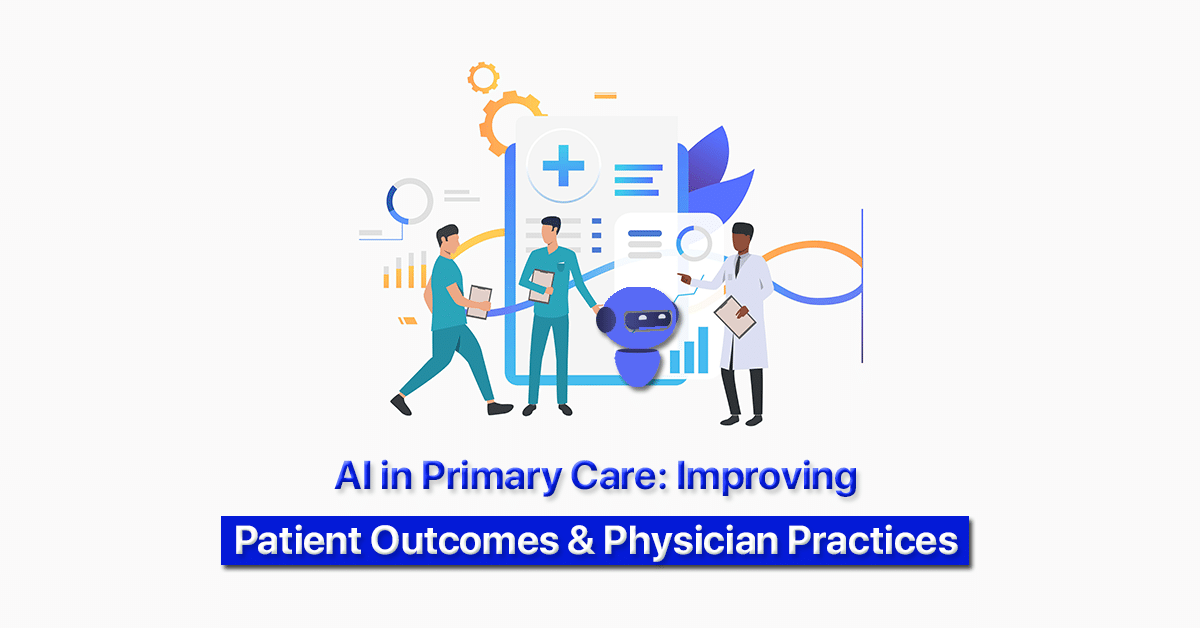Two letters. They’re enough to give your patients more anxiety than any treatment, test or injection. A recent survey by the Pew Research Center shows it: Sixty percent of Americans said they would be uncomfortable with their provider relying on artificial intelligence (AI) in their own health care. But when used responsibly, artificial intelligence can help primary care doctors expand their care while cutting costs in their practices. And patients will notice the difference too—even if they don’t realize the technology behind their improved experience is the result of those dreaded two letters.
Informed patients, informed doctors
What really scares patients is the idea of AI performing the skilled work of doctors. The fact is, however, we are a long way from AI replacing doctors. Nor will AI replace office staff. But we are now at a point where AI can start to address the communication issues doctors face in their practices.
Patients say they don’t want AI making health care decisions for them based on its interpretation of their conditions, but AI can help patients navigate through the treatment process and get them information a lot faster. For example, doctors can use AI and chatbots in their patient engagement strategy to better understand their patients, send them personalized information that is tailored to their treatment journey, and create interactions that are relevant to their personal needs.
“AI has numerous applications for primary care physicians who are looking to manage their patients’ health proactively,” Jonathan Sachs, MBA, vice president and chief experience officer for Robert Wood Johnson University Hospital, told me. “AI can unlock a physician’s ability to understand a patient’s needs beyond their 15-minute office visit by helping that physician make sense of longitudinal data from multiple sources such as wearables, at-home biometric technology, and internet of things devices.”
Interactive messaging
As Google’s chief health officer Karen DeSalvo, M.D., MPH recently noted, the future of health is consumer-driven. AI can help doctors be ready for the shift by improving the way they and their staff communicate with their patients.
Many practices are adopting advanced communications platforms to help streamline their workflow and patient interactions. AI and machine learning will take these platforms beyond simple appointment reminders to create better patient experiences.
AI can send relevant content to the patient at the time they need it the most, which leads to patients who are better educated, more comfortable, more confident, and more engaged in meaningful conversations about their health. The result is better outcomes, and ultimately more patients and cases.
AI Is already working in health care
AI is already helping doctors do their jobs better and more efficiently. Patient diagnostics is one area where we see this already. AI can help doctors ensure that patients who need care most urgently are treated first. AI can also help staff keep track of patients in nursing homes by monitoring their conditions based on data, which takes some of the sting away from nursing shortages. It can also detect disease by analyzing data and advance treatment through machine learning.
In private practices, AI is ready to step in and help with eligibility checks, prior authorizations, insurance claims, referrals, and billing. The immediate benefit of the digital transformation to primary care doctors in their practices, however, is the technology’s ability to boost patient engagement and adherence.
Also, imagine the day when the majority of your scheduling is done by a patient interacting with AI in your practice. Integrating AI technology with practice management systems will make that possible. Appointments will be made and changed all while your front office staff is checking in a patient. The result is a superior patient experience while doctors, nurses, and office staff get time back in their days for the tasks that are most important to them.
Easing patients’ concerns
AI is coming fast and furious, and that is undoubtedly why some of your patients will be apprehensive. The pace of change is exploding. The Wright Brothers’ first flight was in 1903, but commercial air travel didn’t truly take off until decades later. The first human heart transplant was in 1967, while the internet revolutionized the world in a short period of time. And as my great friend Michael Longaker, M.D., co-director of the Stanford Institute for Stem Cell Biology & Regenerative Medicine recently said to me, “The pace of change [in fields like] stem cell biology is rising exponentially each year.”
Patients will get used to AI in their health care. It wasn’t long ago that consumers were afraid to put their financial information online to complete a transaction. Now online shopping is so common that malls are half-empty even during the holiday season. It’s going to take a little time until AI proves to be more effective, but in the present we can look for ways to help patients navigate information better. The right information at the right time makes a difference.
Source: How artificial intelligence can help primary care doctors and their patients

